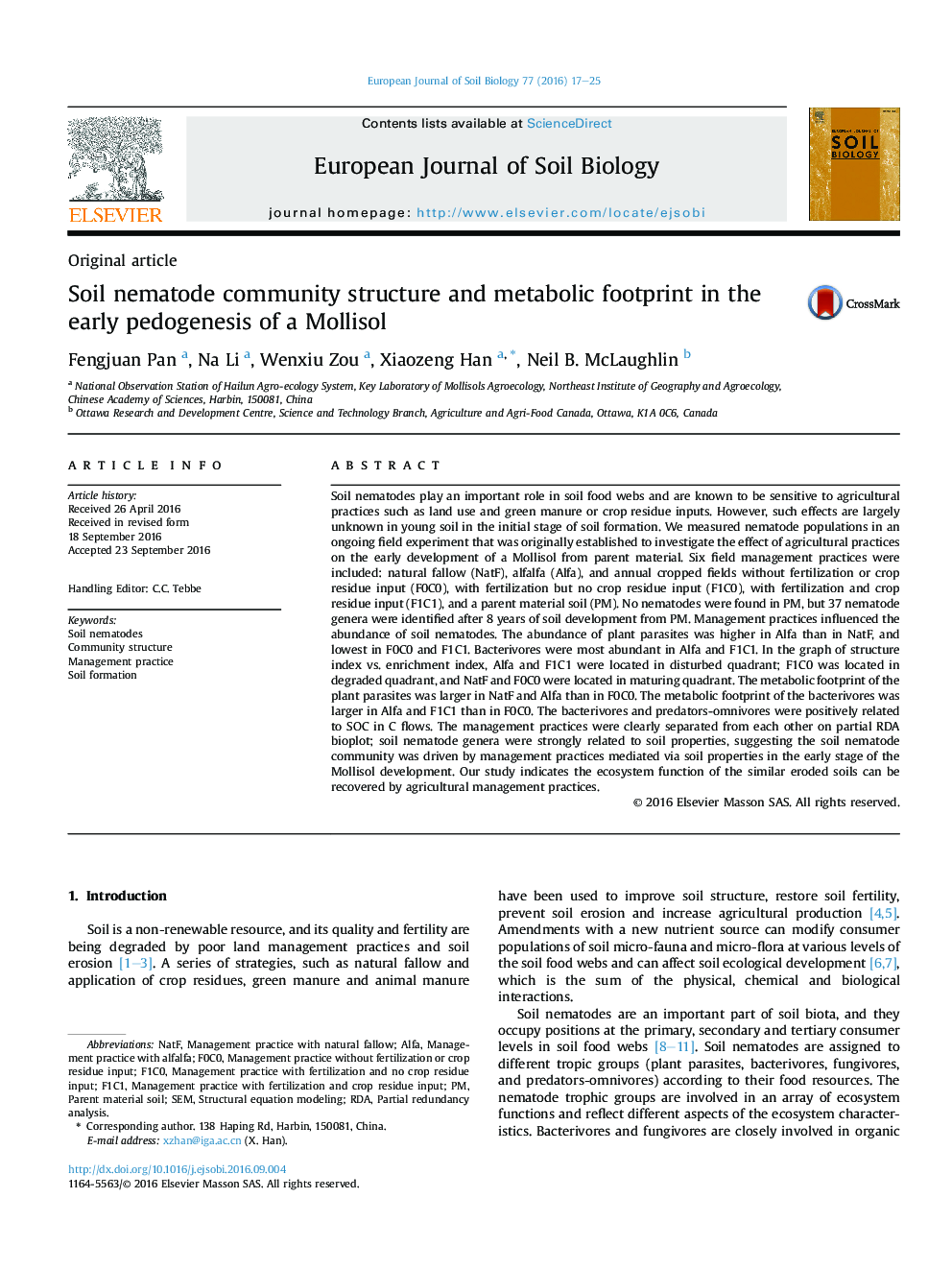| کد مقاله | کد نشریه | سال انتشار | مقاله انگلیسی | نسخه تمام متن |
|---|---|---|---|---|
| 4391622 | 1618115 | 2016 | 9 صفحه PDF | دانلود رایگان |
عنوان انگلیسی مقاله ISI
Soil nematode community structure and metabolic footprint in the early pedogenesis of a Mollisol
دانلود مقاله + سفارش ترجمه
دانلود مقاله ISI انگلیسی
رایگان برای ایرانیان
کلمات کلیدی
موضوعات مرتبط
علوم زیستی و بیوفناوری
علوم کشاورزی و بیولوژیک
دانش خاک شناسی
پیش نمایش صفحه اول مقاله

چکیده انگلیسی
Soil nematodes play an important role in soil food webs and are known to be sensitive to agricultural practices such as land use and green manure or crop residue inputs. However, such effects are largely unknown in young soil in the initial stage of soil formation. We measured nematode populations in an ongoing field experiment that was originally established to investigate the effect of agricultural practices on the early development of a Mollisol from parent material. Six field management practices were included: natural fallow (NatF), alfalfa (Alfa), and annual cropped fields without fertilization or crop residue input (F0C0), with fertilization but no crop residue input (F1C0), with fertilization and crop residue input (F1C1), and a parent material soil (PM). No nematodes were found in PM, but 37 nematode genera were identified after 8 years of soil development from PM. Management practices influenced the abundance of soil nematodes. The abundance of plant parasites was higher in Alfa than in NatF, and lowest in F0C0 and F1C1. Bacterivores were most abundant in Alfa and F1C1. In the graph of structure index vs. enrichment index, Alfa and F1C1 were located in disturbed quadrant; F1C0 was located in degraded quadrant, and NatF and F0C0 were located in maturing quadrant. The metabolic footprint of the plant parasites was larger in NatF and Alfa than in F0C0. The metabolic footprint of the bacterivores was larger in Alfa and F1C1 than in F0C0. The bacterivores and predators-omnivores were positively related to SOC in C flows. The management practices were clearly separated from each other on partial RDA bioplot; soil nematode genera were strongly related to soil properties, suggesting the soil nematode community was driven by management practices mediated via soil properties in the early stage of the Mollisol development. Our study indicates the ecosystem function of the similar eroded soils can be recovered by agricultural management practices.
ناشر
Database: Elsevier - ScienceDirect (ساینس دایرکت)
Journal: European Journal of Soil Biology - Volume 77, NovemberâDecember 2016, Pages 17-25
Journal: European Journal of Soil Biology - Volume 77, NovemberâDecember 2016, Pages 17-25
نویسندگان
Fengjuan Pan, Na Li, Wenxiu Zou, Xiaozeng Han, Neil B. McLaughlin,